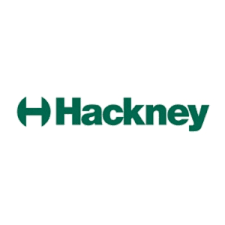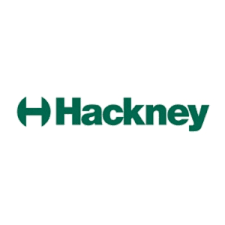Title Page
-
Name of Community Hall
-
Full address
-
Prepared by
-
Location
-
Site Contact
-
Date of Survey
-
Date of Previous Survey
1.0 FIREFIGHTING EQUIPMENT
-
Is the means provided for fighting fire considered adequate for the risk.
-
Are there enough extinguishers sited throughout the building?<br>If yes, please confirm the number and types of extinguishers in additional comments.<br>
-
Are the correct types of extinguishers located close to any fire hazard and can users easily get to them?<br>
-
Are there controls in place to stop the misuse of extinguishers?
-
Is there regular inspection and testing in place for the fire extinguishing equipment?
-
Are those that test and maintain the equipment competent to do so?
-
Are there are any automatic fire extinguishing systems in place? If yes, please give the types in the ‘additional comments’ box.
-
Has someone been assigned specific responsibility for the maintenance of the system ie, arranging inspections? (give details in the additional comments box)
-
Are the systems regularly inspected and tested? Please give inspection and testing frequencies in the ‘additional comments’ box.
-
Are there any known faults with the system(s)? If yes, please provide details of the fault(s) and actions to be taken to correct the fault(s) in the ‘additional comments’ box.
-
Is fire-fighting equipment positioned correctly, easily accessible and simple to use.
-
Is fire-fighting equipment indicated by appropriately positioned durable signs, which comply with the Health & Safety (Safety Signs & Signals) Regulations 1996?
1.1 FIRE DETECTION AND MEANS OF GIVING WARNING
-
Are fire detectors and alarm systems provided as necessary to give early warning and in working order?
-
Are fire alarm call points located on escape routes, unobstructed and clearly visible?
-
Are there suitable fire warning systems in place e.g. manual and automatic systems?
-
Are there fire/smoke detectors in place?
-
Is there a zoning system in place?
-
Can the alarm be heard and understood by everyone throughout the building?
-
Are there alternatives in place for people that cannot hear the alarm or for those in locations in the building where the alarm cannot be heard?
-
If the fire detection system is electrically powered, does it have an emergency power supply?
-
Have there been any false alarm occurrences in the last 12 months?
1.2 Fire safety signs and notices
-
Are escape routes, exits and the location of firefighting equipment all indicated by appropriate signage?
-
Is all signage maintained so that it is correct, legible and understood?
1.3 MEANS OF ESCAPE FACILITIES
-
Are there a sufficient number of exits and are the distribution and number of occupants present
-
Are all emergency routes provided with adequate structural fire protection where necessary?
-
Can all emergency doors be easily and immediately opened by any person in an emergency?
-
Are the routes to emergency exits and the exits themselves are kept clear at all times?
-
Do emergency routes and exits lead as directly as possible to a place of safety?
-
Do emergency exit doors open in the direction of escape?
-
Are all final exit doors able to be opened easily and immediately in the event of an emergency?
-
Do any revolving or sliding doors have suitable bypass doors?
-
Are all fire-resisting doors self-closing, kept shut or only held open by suitable, correctly functioning automatic door release mechanisms?
-
Are people who work in the building aware of the importance of maintaining the safety of escape routes?
-
Are the means of escape arrangements for disabled employees / occupants considered adequate?
-
Can all occupants escape the building to a place of safety in a reasonable time?
-
Is there provision for alternative escape routes or a refuge if an escape route is inaccessible?
-
Are all emergency routes and exits indicated by appropriately positioned durable signs, complying with the Health and Safety (Safety Signs and Signals) Regulations 1996? (where relevant)
-
Are emergency routes and exits requiring illumination provided with emergency lighting of adequate intensity in case of failure of their normal lighting?
-
Is there periodic inspection and testing in place for emergency lighting?
1.4 MAINTENANCE AND TESTING RECORDS
-
Is there regular testing and annual maintenance of the fire detection and alarm system?
-
Is there regular testing of emergency escape lighting?
-
Is there regular maintenance of fire extinguishing equipment?
-
Is there regular inspection of escape staircases and walkways?
-
Is there inspection and testing of rising mains/fire hydrants?
-
Is there regular testing and annual inspection of sprinkler systems?
-
Is there regular testing of firefighting lifts?
-
Are there routine checks of fire (final) exit doors and security fittings?
-
Are there adequate records made and held for training and tests such as: <br>Fire drills <br>Fire training <br>Fire alarm tests <br>Emergency escape lighting tests<br>Maintenance and testing of all other fire protection systems and equipment?<br>
-
Are all records available for inspection by the fire department if required?
1.5 MANAGEMENT OF FIRE EVACUATION PROCEDURES
-
Is a suitable emergency action plan in place for the purpose of regards to layout and nominated fire wardens
-
Are a sufficient number of employees nominated to implement equipped
-
Are emergency contacts with external services arranged as necessary with regard to rescue work and firefighting?
-
If two or more organisations manage the premises, do they cooperate so far as necessary to comply with The Regulatory Reform (Fire Safety) Order 2005
-
Have appropriate procedures been established to evacuate from, or restrict access to, confined spaces or hazardous locations
-
Is the employer of any employees from an outside undertaking in compliance with The Regulatory Reform (Fire Safety) Order 2005, in so far as they relate to those employees?
1.6 INFORMATION / TRAINING FOR EMPLOYEES AND OTHERS
-
Are employees and other persons on the premise provided with comprehensive and relevant information on the emergency action plan including preventive and protective measures identified as necessary for safety in the event of fire whilst they are at work.
-
Have roles and responsibilities in the event of a fire been assigned e.g. people trained to use extinguishing media, fire marshals, people to assist evacuation of disabled people etc? If yes, please detail these in the ‘additional comments’ box.
-
Is there an emergency plan in place and where necessary have all details been recorded?
-
Is the plan available to the fire department on request?
-
Are there suitable arrangements for calling and liaising with the fire department?
-
Are there suitable arrangements for ensuring the building has been evacuated?
-
Are there adequate procedures in place for the evacuation of people at higher risk?
-
Are there suitable fire assembly points?
-
Are the fire assembly points clearly signposted and communicated to workers and visitors?
-
Are the premises shared with other organisations? If, yes, what arrangements are in place to ensure cooperation and coordination of fire arrangements?
-
Are Fire Action Notices clearly displayed throughout the premises?
-
Do employees know the identity of those persons nominated to implement the emergency action plan?
-
Are realistic fire drills periodically conducted and full details of the exercises (& any staff feedback) recorded.
-
Is suitable and regular fire safety training given to all relevant persons and full details of this training recorded?
-
Is a record of fires or near misses kept with full details of the occurrence and any feedback recorded?
1.7 FIRE BRIGADE ACCESS AND CAPABILITY
-
Is adequate vehicular access available to enable fire brigade personnel to reach the perimeter of the building?
-
Does the Emergency Action Plan relate to the likely Fire and Rescue Service response?
-
Is a Premise Fire Information Box provided in a prominent position for the use of the Fire & Rescue Service (where relevant)?
1.8 Electrical/Gas Installation and Service Appliances
-
Is the electrical installation regularly inspected and tested by a competent person.
-
Is the area surrounding the main electrical intake appliance clear of combustible materials?
-
Are electrical appliances regularly inspected and tested by a competent person.
-
Is the use of flexible cable kept to a minimum and are flexible cables routed so as to avoid damage to the cables?<br>
-
Is there suitable management of trailing leads and adaptors?
-
Is the number of electrical socket outlets adequate for the amount of equipment provided?<br>
-
Is any fixed gas installation regularly inspected and tested by a competent person?
-
Is extract ductwork and filters serving frying areas in kitchens regularly cleaned, or replaced as necessary? Are these details recorded?<br>
-
Are there fixed heating and ventilation installations within the premises?
-
Are all heating appliances fixed in position at a safe distance from combustible materials?
-
Are the fixed heating installations regularly maintained?
-
Are all heating appliances suitably guarded?
-
Are there any portable heaters within the premises? Are there any portable heaters within the premises? If yes, are these adequately controlled?
-
Is there a suitable policy in place for use of personal electrical appliances (workers and visitors)?
-
1.9 Cooking
-
Are there measures in place to prevent fires from cooking?
-
Are there suitable extinguishing appliances available? <br>If yes, please list types in additional comments.<br>
-
Are filters cleaned and changed and ductwork cleaned regularly?
2.0 Other Ignition Hazards
-
Is an adequate system adopted for permitting and monitoring hot work operations by outside contractors?
2.1 Arson
-
Are there any potential fire load/combustibles near to the premises/boundary that are accessible to outsiders or other persons?
-
Are adequate measures in place to guard against the risk of malicious ignition?
-
Are there access control/security measures in place?
2.2 FIRE BRIGADE ACCESS AND CAPABILITY
-
Is adequate vehicular access available to enable fire brigade personnel to reach the perimeter of the building?
-
Does the Emergency Action Plan relate to the likely Fire and Rescue Service response?
2.3 Combustible Materials
-
Are combustible materials separated from ignition sources?
-
Are hazardous materials stored appropriately?
-
Are there appropriate processes in place for the safe storage and disposal of waste?
-
Are there procedures in place to prevent accumulation or inappropriate storage of combustible materials or waste? Please provide further information in the ‘additional comments’ box. <br>
-
Are procedures in place to keep escape routes clear?
-
Are routine fire safety inspections carried out?
-
Is all upholstered furniture in good condition
-
Are all heating appliances suitably guarded?
-
Have all areas of flammable wall and ceiling linings been across their surface
-
Is the premise free from accumulations of rubbish, wastepaper and other readily ignitable materials?
-
Are adequate arrangements made for disposal of waste and rubbish?
-
Are all sources of heat (e.g. heating pipes, radiators, luminaries) at a safe distance from combustible materials?
-
Are the arrangements for storing highly flammable or readily combustible materials not in current use satisfactory?
-
Are storage areas for highly flammable and explosive materials identified by hazard warning signs conforming to the The Health and Safety (Safety Signs and Signals) Regulations 1996?
-
Is there appropriate storage and transportation for these substances within the workplace eg, flammable chemicals, liquids, solvents, and gases (including piped gas supply and in cylinders)? You must list in the additional comments box all relevant substances.
-
Are there appropriate controls in place for the safe handling and use and removal/disposal of these substances in the workplace?
-
Are there suitable controls in place for the safe use, storage, transport (within the workplace), and disposal of fuel sources? Fuel sources include: <br>paper and cardboard; <br>plastics and rubber; <br>textiles and soft furnishings; <br>waste; <br>furniture; <br>fixtures and fittings; <br>electrical insulation; and<br>other combustible materials.<br>
-
Are there appropriate controls in place for the safe handling and use and removal/disposal of these substances in the workplace?
2.4 Sources of oxygen
-
Have all potential sources of oxygen been identified?<br>If yes, please list in additional comments<br>
-
Are there suitable controls in place for the safe use and storage of oxidising materials?
2.5 Fire protection
-
Is compartmentation of a reasonable standard e.g. are any holes or gaps in walls, ceilings and floors from ventilation ducts, electrical cabling appropriately sealed?
-
As far as can be ascertained, are fire dampers provided to protect critical means of escape against heat, fire, and smoke spread?
-
Are there any wall linings or coverings that would promote fire spread?
-
Is the building used during periods of darkness?
-
Is there enough emergency lighting to safely use escape routes?
-
Is there a backup power supply for emergency lighting?
2.5 Structural Fire Precautions / Fire Spread
-
Does the survey negate the need for any further investigation in other areas of the building?
-
Are areas of higher fire risk/high fire loading provided with physical separation from the remainder of the premises?
-
Are areas of specific importance such as Electronic Data
-
Processing Rooms adequately enclosed with fire resisting reasons of property / asset protection?
-
Does the building have a lightning protection system in place?
-
Is the lightning protection system regularly tested and maintained?
2.6 Smoking
-
Is smoking prohibited in the building?
-
Is smoking confined to designated areas and are “NO SMOKING” signs displayed where appropriate
-
Are there designated areas where smoking is permitted?
-
Are there suitable arrangements for the extinguishing and disposal of cigarettes?
2.7 Construction and maintenance work
-
Are all external contractors made aware of all fire safety controls?
-
Are there suitable controls in place for hazardous activities carried out by in-house workers and external contractors such as a permit-to-work system for 'hot work' involving cutting, welding, use of blowlamps, etc?
-
2.8 Other matters affecting fire risk
-
Was the previous fire risk category for the premise higher or the same?
-
Are all other matters affecting fire risk adequate?
2.9 FRA RISK RATING
-
The previous fire risk category for the premise was
-
The current fire risk category for the premises is considered to be













